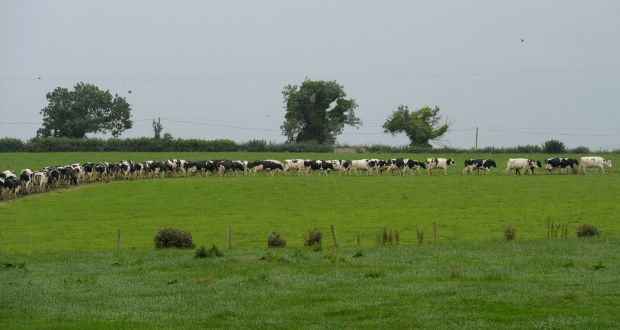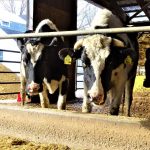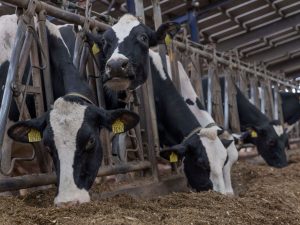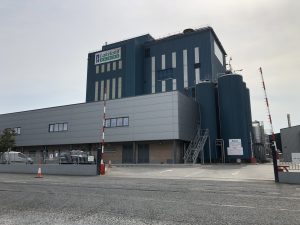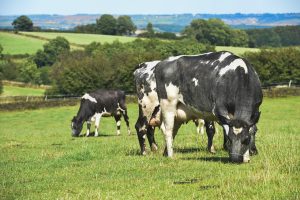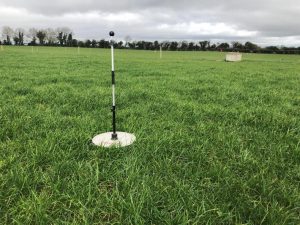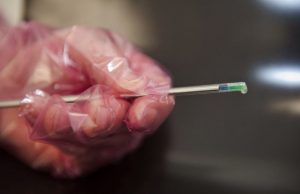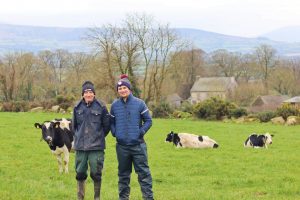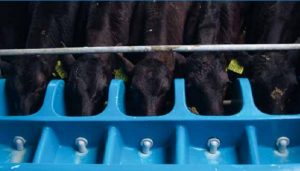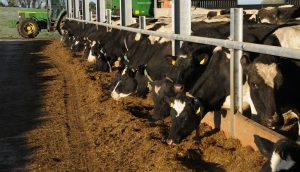
Ireland’s dairy herd has increased by about 50 per cent since 2015 along with a parallel increase in emissions of methane, a strong greenhouse gas emitted by cows that it is more potent than CO2, although the latter persists much longer in the atmosphere.
Irish scientists were tasked to find ways to reduce our methane emissions even as milk production increased. They have come up with some promising ideas.
The Irish Farmers’ Association estimated there were 1.4 million dairy cows in Ireland in 2017. These cows are fed on grass, which digests inside the animals’ stomachs where it interacts with microbes and produces methane. Some 34 per cent of Ireland’s emissions come from agriculture and 60 per cent of that is due to methane.
The Government Climate Action Plan has set a target of reducing emissions from agriculture by 10 per cent to 15 per cent by 2030. This reduction must take place as the national dairy herd population is likely to increase further in size as dairy farmers seek to increase their herd populations and their profitability – and global demand is likely to remain strong.
“The targets for reducing emissions are not impossible, but it’s going to be tough,” says James Humphreys, research officer at Teagasc’s Grassland Research Innovation Centre in Moorepark who advises dairy farmers. “We need a breakthrough on reducing methane emissions from livestock,” he adds.
Targeting bacteria
One way to reduce methane emissions from dairy cows is to interfere with the action of the methane-producing bacteria residing in the cow’s gut. This is the goal of the Methlab project, led by Prof Catherine Stanton, scientist with Teagasc and principal investigator at the APC Microbiome Ireland at UCC.
“It is well known that some lactic acid bacteria which are commonly used in food fermentations have the ability to produce antimicrobial compounds, or bacteriocins, which can kill other bacteria,” she says.
“So the idea is that we want to identify lactic acid bacteria and use them as silage inoculants or animal probiotics to give to the animal whereby they have been shown to have an effective ability to reduce methane emissions as a result of their ability to produce antimicrobial compounds.”
Methlab is funded by FACCE ERA-GAS, an EU fund supporting research for monitoring and regulating greenhouse gas emissions from agriculture and forestry. It began three years ago and has partners in Ireland at Teagasc, APC Microbiome and UCC, as well as in France, The Netherlands and New Zealand.
Lactic acid bacteria (LAB) are already commonly used as feed supplements or silage inoculants to increase production and improve animal health. Methlab is different, however, as the LAB will also be refined to reduce methane.
The bacteria in the stomach of dairy cows – the rumen – which produce methane are called methanogens. Methlab scientists have now characterised and identified those LAB capable of targeting the methanogens, and these are being commercially manufactured by an Italian company Sacco.
“We have already demonstrated that the LAB that we have selected has an ability to reduce methane production by the methanogen strains that are the ones responsible for the methane production in the rumen,” Stanton adds. “We know that, but that’s ex-vivo. We haven’t done it in the animal yet; phase three is proving it in vivo.”
Animal trials will take place this year in research facilities at the University of Wageningen in The Netherlands. The cows will be fed silage containing the Methlab-produced LAB. Their emissions of methane will be monitored directly by chambers that the animals wear on their backs.
The scientists will compare the methane emissions of cows fed Methlabanti-methanogen bacteria with those who did not ingest the bacteria.
Meanwhile, at the Teagasc Animal Grasslands Research Centre dairy cows will be fed the LAB and monitored to see whether this has any impact on the yield and quality of the milk animals produce. They are hoping for a win-win, where emissions of methane are reduced, while yield and quality are improved.
Genetics factor
Some scientists, like Sinead McParland, a research geneticist based at Teagasc Moorepark, have examined whether genetics can reduce methane, given individual cows are reported as naturally producing different emission levels.
“We know that it is heritable, so we know there is variation from parent to offspring,” explains McParland. “We have an idea that it’s variable, so we have an idea that there are ‘good emitters’ and ‘bad emitters’ – or animals emitting more than each other to, say, produce the same amount of milk.”
Dairy cows are bred according to the Economic Breeding Index (EBI). This selects the animals that are the most profitable in the herd. Irish farmers have been selecting their animals this way since 2001, and the majority now do so.
McParland wants to capture the emissions cows are producing individually, and to genetically select the low emitters as part of the EBI. The main obstacle to this is the difficulty of collecting emissions data on all cows out in the field.
“Capturing methane emissions from animals is really very labour intensive,” says McParland. “We are really only able to do it in a research environment such as in Teagasc Moorepark or through the use of respiration chambers for example.”
However, there may be another way. At the moment, milk samples are regularly taken from cows during their routine milking and sent to a laboratory where the different types of fat and protein are analysed. This then allows scientists to compare the energy a cow has taken in, in her diet, to the milk quality produced.
The same milk sample data could be used to predict how much methane a given animal will produce, he says . “Initial research has shown us that this is potentially viable. My research is now looking at doing this on the national herd.”
“When you are selecting through genetics you are not adding anything into the diet. It is not costing you any extra money and as a nation we can say that we are selecting more environmentally-friendly animals.”
Information technology
The VistaMilk SFI Research Centre in Fermoy was set up to combine Ireland’s expertise in information and communication technology with agriculture know-how. This means generating new knowledge that can facilitate the increases in agricultural production, efficiency and profits, while also reducing environmental footprints.
Centre director Donagh Berry believes big gains can be made, for example, by applying genetics. “We know, for example, that around 13 per cent of the differences in how much methane a cow produces is due to the genetics of the cow.
“We can make phenomenal progress; we have shown this because the cow of today is very, very different to the cow of 20, 30 or 50 years ago,” he notes.
Another way to reduce methane emissions is changing the diet. “From a nutritional supplementation perspective, there are options there that could potentially reduce the methane by 20 to 30 per cent,” says Berry. Yet, it is important that this be done, he adds, without damaging the taste or the quality of the milk produced.
Despite all the promising science, the big unknown is just how big will Ireland’s dairy herd grow in the next decade. Experts believe the herd will continue to increase as farmers seek to increase profitability, making it very difficult to reduce our agricultural emissions as set out in ambitious targets laid out for 2030.
